Innovation, integration and beyond
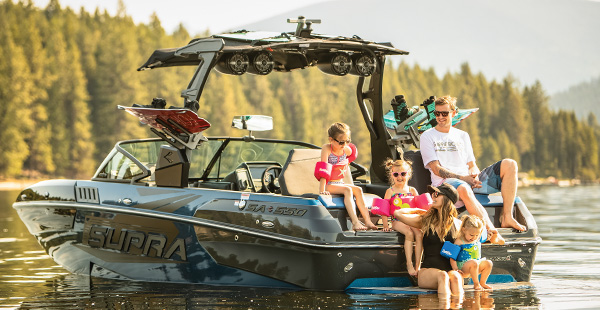
By Adam Quandt
Marine entertainment manufacturers push limits to keep boaters happy on the water
With the added challenges of a harsh environment and very limited space, marine audio and entertainment manufacturers have been tasked by consumer desires to catch up to the amenities offered in the automobile industry.
Fusion Marine Entertainment managing director Chris Baird said that over the last five years especially, the industry has seen customers taking on-board entertainment seriously. “This pushes boat builders to install better quality audio and entertainment products from the get go, which has really forced the market to step up as a whole,” he added.
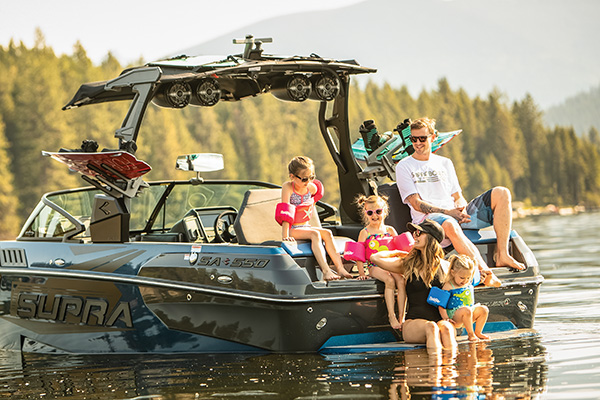
Most manufacturers attribute the consumer drive for better audio and entertainment to what’s available to them in their cars and at home in today’s market.
“Consumers have everything seamlessly connected and integrated in their cars today,” JL Audio vice president of business development and strategic planning Alan Wenzel said. “They expect to find that same integration in their boats. Connectivity in the boat is huge now.”
Consumers now listen to their music in a completely different way. Streaming reigns supreme in today’s world of getting exactly what you want, when you want it. Marine audio and entertainment providers must now ensure their new products will support streaming services, while putting out the highest quality audio.
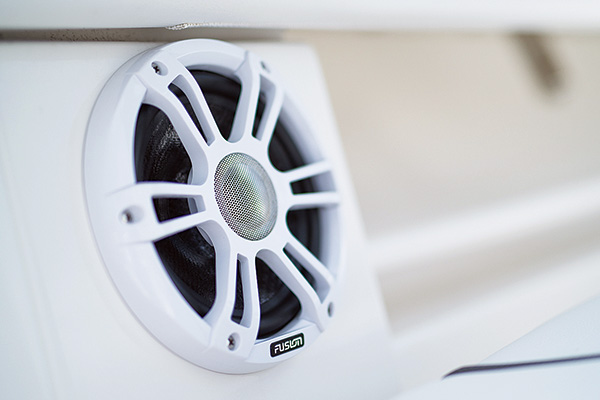
For Fusion, Baird said they were noticing a trend in the majority of their customers using Apple products. With that knowledge, Fusion made a case to Apple to allow Fusion to be made Apple Play compatible.
“It’s these added details after months of research and funding that push products to an elevated level to meet customer’s expectations,” Baird added.
Similarly, JL Audio and its Clarion Marine brand continue to work to ensure everything that’s available in today’s automobile carries over to the boat, from satellite radio to streaming services.
In an effort to further improve audio quality, Fusion’s new Apollo line streams audio using WiFi rather than Bluetooth, allowing the streaming of bigger packets of audio information which results in better sound quality, as well as better coverage.
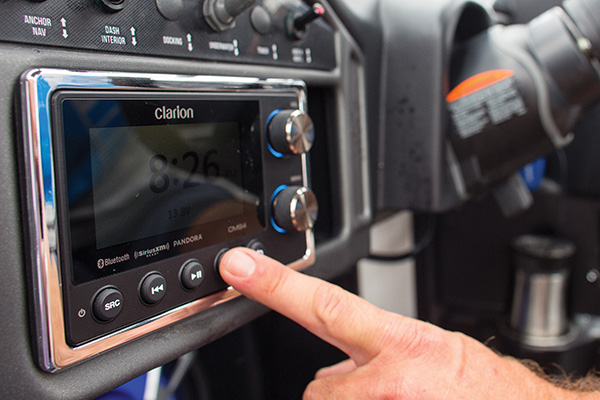
While JL Audio and Clarion Marine continue to use Bluetooth for their wireless streaming and connections, Wenzel said that it’s more about the quality of the Bluetooth components the builder uses. “Bluetooth isn’t created equally; it’s really all about the quality of the components used,” he added.
Aside from building products to operate and survive in a harsh environment, one of the biggest problems facing audio and entertainment manufacturers in the marine industry is limited space and locations for equipment. This creates challenges to providing premium audio quality at the correct soundstage for consumers.
“A serious problem, in regards to sound, is the less-than-ideal speaker locations that boats provide. With the science of sound, bass is omni-directional while higher frequencies are unidirectional,” said Josh Berry, Prospec Electronic’s vice president of sales and marketing. “To further this explanation, higher frequencies act as a laser beam dispersing in a straight line. With lower frequencies, a.k.a. bass, one should be able to stand in the middle of the boat and not tell where the subwoofer is installed. Most speakers on boats are installed at ankle level, thus preventing effective dispersion of the mid-to-higher frequencies. This laser beam effect results in these mid-to-higher frequencies aimlessly firing at your friend’s ankles.”
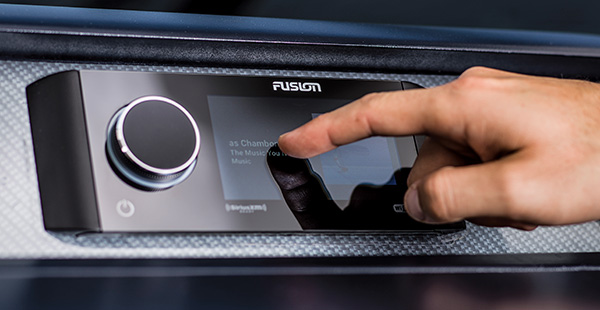
Infinity by Harman recently released its new Kappa Series 8-inch 3-way marine speakers as a means to combat this challenge. The speaker allows for the flexibility to remove the 3.5-inch mid tweeter from the main speaker body and install it at a higher location, like a hardtop or high on the helm, thus raising the soundstage up to a listener’s ears.
Similarly, other manufacturers are working to install audio components in higher locations on the boat to elevate the soundstage and bring a higher quality of audio to the consumer.
Another approach manufacturers are taking to solve challenges presented by limited space and a harsh environment is the ability to control various audio zones.
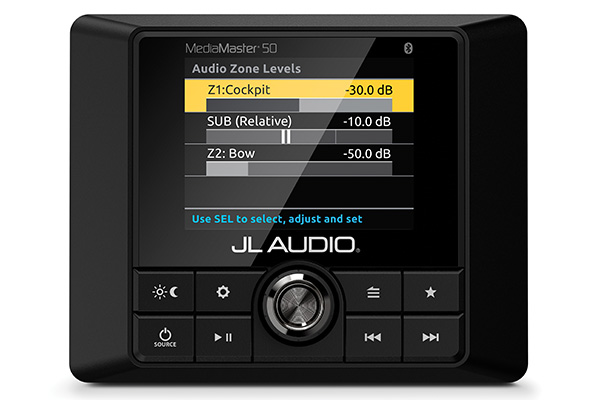
“System layout is critical,” Wenzel said. “From a bow zone, stern zone, to cockpit, you name it, all of the audio components must be finely tuned according to their specific zones.”
On top of that, Wenzel pressed the importance of creating a full range of components to provide the optimum sound quality in such a small environment like a boat. “Subwoofers especially make the difference,” he added. “In the marine environment it’s difficult to overcome ambient noises. Subwoofers target many of the ambient noise frequencies, all while lessening the workload on the full-range speakers.”
Aside from a desire of high quality audio through a seamlessly connected setup, manufacturers agree that consumers want a system that is their own.

“The No. 1 trend we see in our segment of the industry is customizing and personalizing a system according to what the customer wants to achieve,” Wenzel said.
“We understand that both our OEMs and aftermarket customers have different needs and desires,” Fusion Marine Entertainment marketing manager Marcus Hamilton said. “Our job is to continue putting out quality products from both sides.”
One of the largest trends in today’s marine audio and entertainment segment is providing LED lighting options paired with audio.
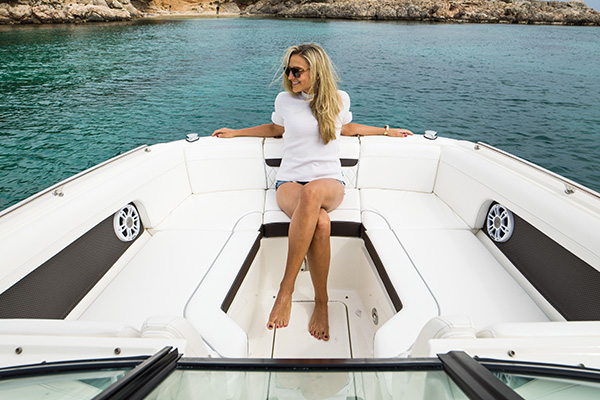
Both Infinity’s new Kappa speaker and JL Audio’s new M6 line offer premium lighting tied to the speakers, offering consumers the ability to create a new experience on their boats. As this trend continues, manufacturers said that more lighting options and partnerships with lighting companies can definitely be expected.
At the end of the day, marine audio and entertainment manufacturers strive to create an experience unlike any other out on the boat. Whether on the OEM or aftermarket side, they are working to imagine a better integrated boat, to keep boaters happy and above all, keep people out on the water.




